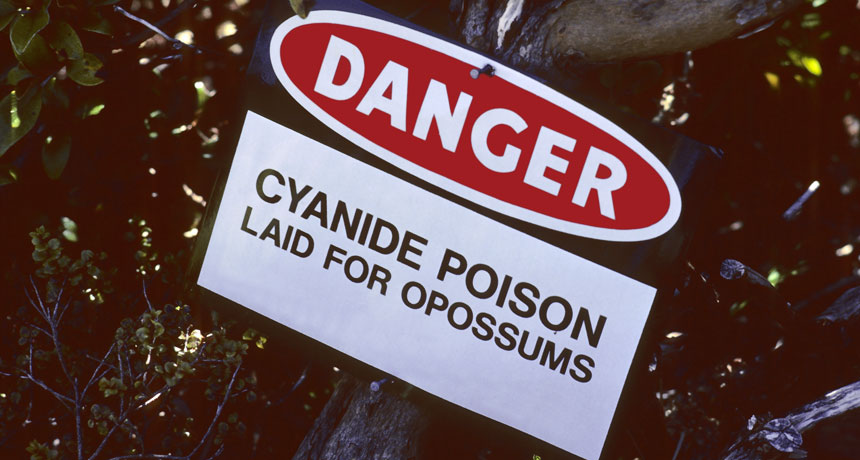Scientists Say: Cyanide
This group of compounds is useful — and poisonous

Cyanides are a group of chemicals used for many things. But all are poisonous.
Falk Kienas/istockphoto
Cyanide (noun, “SIGH-uh-nide”)
Any chemical that has a nitrogen and a carbon atom bonded together by sharing three electrons — or negatively charged particles. Because each carbon atom can make up to four bonds at once, this leaves one chemical bond free. That last bond could go to grab a hydrogen atom and make hydrogen cyanide — a poisonous gas that smells a little like almonds. Or the bond might hold onto a sodium atom, making sodium cyanide. This chemical is used in gold mining and is also very poisonous.
In a sentence
Wild blue tangs, the fish that inspired Finding Dory, are often stunned using cyanide so that fishers can capture them for sale as pets.
Follow Eureka! Lab on Twitter
Power Words
(for more about Power Words, click here)
carbon The chemical element having the atomic number 6. It is the physical basis of all life on Earth. Carbon exists freely as graphite and diamond. It is an important part of coal, limestone and petroleum, and is capable of self-bonding, chemically, to form an enormous number of chemically, biologically and commercially important molecules.
chemical bonds Attractive forces between atoms that are strong enough to make the linked elements function as a single unit. Some of the attractive forces are weak, some are very strong. All bonds appear to link atoms through a sharing of — or an attempt to share — electrons.
compound (often used as a synonym for chemical) A compound is a substance formed from two or more chemical elements united in fixed proportions. For example, water is a compound made of two hydrogen atoms bonded to one oxygen atom. Its chemical symbol is H2O.
cyanide Any chemical compound containing a pairing of carbon and nitrogen, but especially sodium cyanide (NaCN). These compounds have had a number of industrial uses, from pesticides and the extracting of silver and gold from ore, to dyes and the hardening of metals. They also are deadly poisons.
electron A negatively charged particle, usually found orbiting the outer regions of an atom; also, the carrier of electricity within solids.
hydrogen cyanide A chemical compound with the formula HCN (meaning it consists of a bound atom of hydrogen, carbon and nitrogen). It is a toxic liquid or colorless gas. It can have an almond-like odor.
nitrogen A colorless, odorless and nonreactive gaseous element that forms about 78 percent of Earth’s atmosphere. Its scientific symbol is N. Nitrogen is released in the form of nitrogen oxides as fossil fuels burn.







